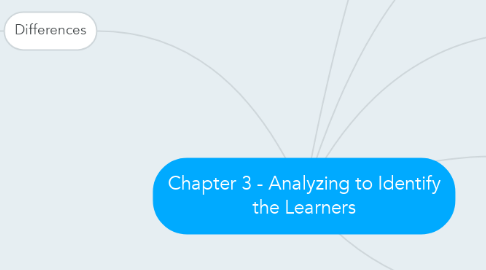
1. Differences
1.1. ABCDs of Personality
1.1.1. affect (feelings)
1.1.2. behavior (actions)
1.1.3. cognition (thinking)
1.1.4. desire (motivations
1.2. Which differences should be addressed?
1.2.1. The nature of the learner characteristics
1.2.2. The constraints involved in the situation
1.2.3. The demands of the content
1.3. Individualized Instruction - gearing the learning to the needs of the individual, not learning in an isolated context
1.3.1. Three main Differences
1.3.1.1. Intelligence
1.3.1.1.1. Section 508 - all electronic and information technology that is developed or purchased by US Federal agencies must be accessible by people with disabilities
1.3.1.1.2. Section 504 - school districts provide a free and appropriate public education to students with disabilities that is comparable to the education being received by their non-disabled peers
1.3.1.2. Motivational Goal Orientations
1.3.1.2.1. Extrinsically - rewards, grades, advancement, praise
1.3.1.2.2. Intrinsically - relevance of the material to their own goals
1.3.1.3. Prior Knowledge
1.3.1.3.1. When designers assess prior knowledge and customize the learning material accordingly, the overall achievement of all learners can be significantly improved
1.4. Age and Generational Differences
1.4.1. Self-concept
1.4.2. Experience
1.4.3. Readiness to learn
1.4.4. Orientation to learning

